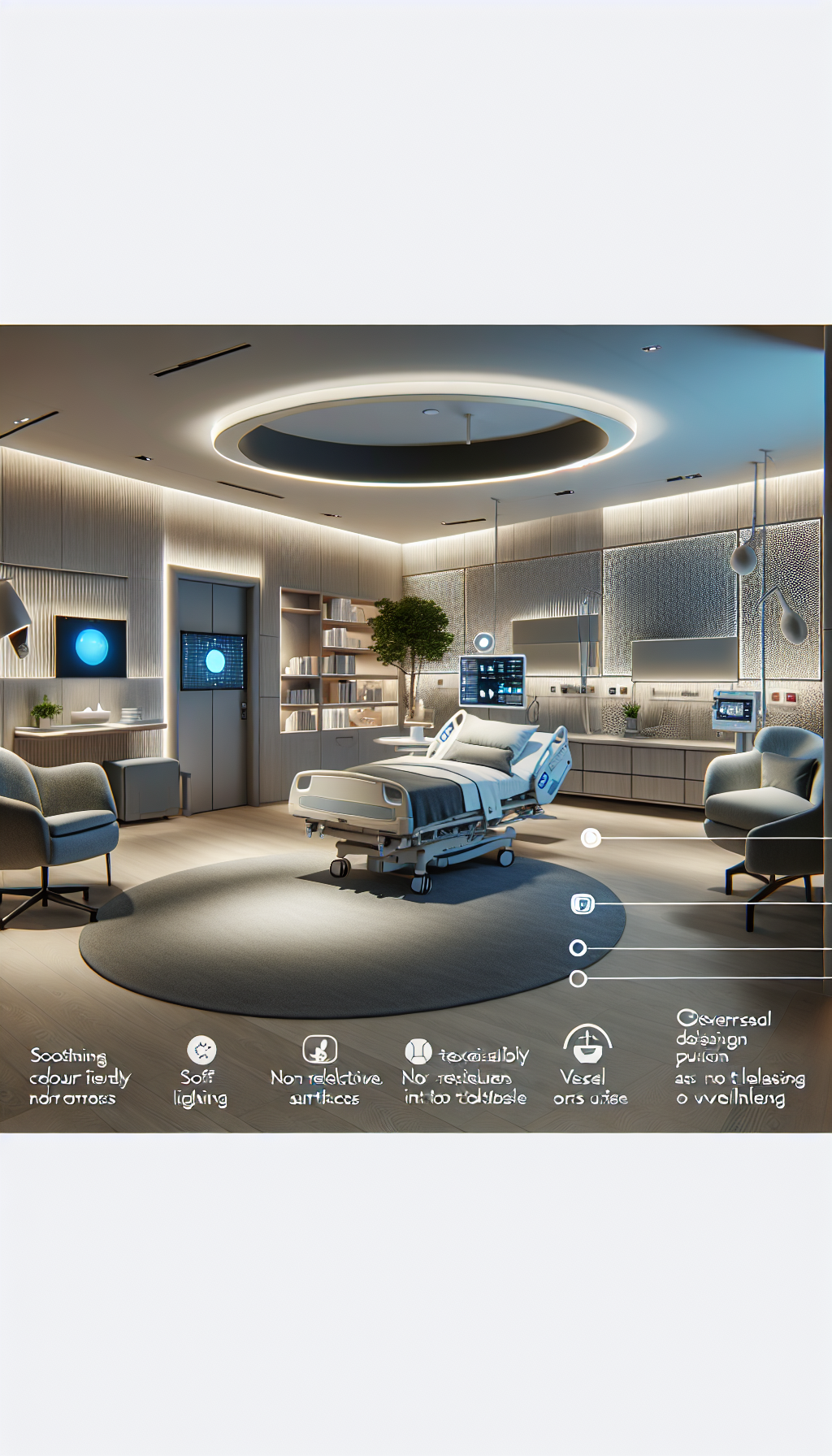Over the past few decades, healthcare professionals have increasingly recognized the profound impact of sensory environments on patient recovery rates. A sensory environment encompasses all the stimuli that affect our senses, such as light, sound, touch, and smell. Research suggests that when healthcare providers tailor these environmental elements to support patients’ sensory needs, recovery times can improve significantly. This article delves into the mechanisms behind this phenomenon, offers practical advice for healthcare settings, and highlights the importance of sensory health in the recovery process.
Understanding Sensory Health
Sensory health refers to the ability of the nervous system to receive, interpret, and respond to stimuli. It plays a crucial role in our overall well-being, affecting everything from brain health to emotional regulation. In a healthcare setting, addressing sensory health can mean the difference between a sterile, anxiety-inducing environment and a healing, supportive space.
The Role of Sensory Environments in Recovery
A well-designed sensory environment can reduce stress and anxiety, which are known to impede healing. For instance, exposure to natural light has been linked to improved mood and faster recovery. Similarly, minimizing noise pollution can prevent sleep disruption and reduce stress levels, both of which are essential for healing.
Visual Stimuli
Visual stimuli such as lighting, color, and imagery can influence a patient’s mood and stress levels. Soft, natural lighting can create a calming effect, while bright, harsh lighting can cause discomfort and anxiety. The use of certain colors in patient rooms and common areas can also play a role. For example, blues and greens are often used for their calming effects.
Auditory Stimuli
The auditory environment in hospitals often includes a variety of disruptive sounds, from beeping monitors to hallway chatter. Prolonged exposure to noise can increase cortisol levels, which can delay healing. Providing patients with options to listen to calming music or white noise can help mitigate this issue and promote a more restful atmosphere.
Tactile Stimuli
The tactile or touch-related aspects of a sensory environment often receive less attention but are equally important. The comfort of bedding, the texture of gowns, and even the quality of a chair can influence a patient’s comfort and stress levels.
Olfactory and Gustatory Stimuli
Scents and tastes can also affect a patient’s sensory environment. While hospitals must maintain a certain level of cleanliness and sterility, incorporating pleasant, subtle scents where appropriate can enhance the patient experience. Similarly, providing meals that are not only nutritious but also appealing in taste and presentation can improve patients’ overall comfort and satisfaction.
Practical Applications in Healthcare Settings
Recognizing the importance of sensory environments, some hospitals have begun to implement sensory-friendly practices, which can be found in resources like Sensory Friendly Practices for Hospital Design and Care. These practices range from redesigning patient rooms to be more comforting to using technology that minimizes disruptive noise.
Designing for Sensory Health
Designing for sensory health involves creating spaces that reduce negative stimuli and promote positive sensory experiences. This could mean implementing soundproofing measures, using adjustable lighting, or providing patients with personal control over their immediate environment.
Technology and Sensory Environments
Advancements in technology have also paved the way for innovations in sensory environments. For instance, customizable sound machines can help mask hospital noises, and smart lighting systems can simulate natural light patterns to help maintain patients’ circadian rhythms.
Staff Training
Staff training is also a key component of improving sensory environments. Educating healthcare workers about the impact of sensory elements on recovery rates can lead to more mindful practices, such as minimizing noise and handling patients in a way that reduces discomfort.
Evidence of Improved Recovery Rates
The link between sensory environments and recovery rates is more than anecdotal. Several studies have demonstrated measurable improvements in patient outcomes with the adoption of sensory-friendly practices. For instance, a study published in the Journal of Advanced Nursing found that patients in sensory-adapted rooms experienced less anxiety and reported higher satisfaction levels.
External Resources for Further Reading
For those interested in exploring this topic further, niche resources such as the Center for Health Design offer in-depth insights into how environmental design can impact health outcomes (https://www.healthdesign.org/). Additionally, the Quiet Hospital Initiative provides guidelines on how to create a quieter hospital environment to improve patient recovery (https://www.quiethospitalinitiative.org/).
Conclusion and Future Directions
The impact of sensory environments on patient recovery rates underscores the need for a holistic approach to healthcare. By prioritizing sensory health and creating environments that cater to the sensory needs of patients, healthcare providers can foster faster and more comfortable recovery experiences.
As we move forward, it is essential to continue researching and implementing sensory-friendly practices in healthcare settings. The future of patient care may very well depend on our ability to design environments that not only treat the body but also nurture the senses.
Furthermore, information on sensory health is not only applicable in healthcare settings but also serves as a valuable resource for understanding broader health and wellness topics. For example, exploring the role of sensory environments in early childhood education or how to address sensory overload in the workplace can offer insights into creating supportive spaces in various contexts.
Finally, for those seeking more personalized support, consulting with healthcare providers about sensory health and its impact on recovery can lead to individualized care strategies that take into account the unique sensory preferences and needs of each patient.
By integrating sensory health into the conversation on patient recovery, we can work towards a more compassionate and effective healthcare system that recognizes the profound connection between our senses and our overall health and wellness.



